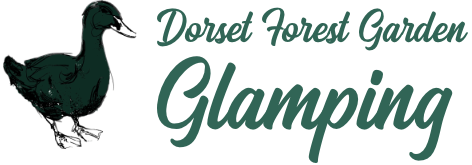One question we have frequently been asked by new guests arriving to stay in our shepherd’s huts is – Was your house on Grand Designs it looks familiar?
No it wasn’t; though our architects were keen, we were less enthusiastic with the idea of having cameras to record when things were going wrong!!! It was in the magazine though.
We started building in 2007, a date marked (like so many Grand Designs projects) by the birth of our daughter. The incubation time for the design however went right back to 2003 when we started to live on our farm and dreamed of the day when it was not in a caravan.
The environment has always been important to us (long before it was the big news it is today). We subscribed to a Green Build magazine and pored over ideas of what our forever home would be like. We were taken with passive solar as the way to heat our home as it worked with nature (a key principle we try to abide by). In effect it is completely free energy.
Passive solar principles
The windows are mainly south facing (lucky for us this is where our views are too) and the roof overhang is designed in to shade the house when the sun is at its fiercest.
The principles are when the sun is low in the sky (in winter) the sun drenches the house with sunlight warming the thermal mass of its structure that then holds onto the heat within it. When the sun is high in the sky (in summer) the south facing overhang of the roof shades the house so it remains cool even on the hottest days.
The principles of the house were derived from German pioneering designs, but had not been properly tested in the UK and we heard many sceptics say that it would not work in our UK weather.
How has it worked?
As real people on a real budget we needed to decide between investing in insulating the house to bring it up to passive standards or compromising on the insulation and adding heating. We decided to gamble, and have faith in the passive principles. The walls are half a metre thick and we have no radiators installed.
We’ve been very pleased with our home. It was built on a budget using every day building principles. Our biggest expense was our windows and doors as we chose to use a local joinery firm for this. In hindsight this was our most expensive mistake. The joiners did not understand the needs for thoroughly draught-proofing the doors and windows and we will in time need to improve the seals. Also all mortice locks need to be replaced with European locks as these tiny holes that in a traditional home are not very noticeable are very obvious when sealing a home for warmth.
That said, we are so pleased with the design and glad we were brave enough to go with it. There are very cold days when we can be in t-shirts because the house is cosy. The roof is a green roof; it is great for attracting insects and bio-diversity, and curved to reflect the rolling Dorset countryside.
The overhang really does keep the house temperature even throughout the year, and the giant south facing windows helps us to feel connected with the world outside (which in an area of outstanding natural beauty is a real positive). The times the house can get cold is when there is no sun and high winds for long periods. Better seals should eliminate the wicking effect of this sort of weather.
The house is also earth sheltered on the north side by digging it into the hillside so we enter from the north straight into the upstairs and we sleep downstairs. This is ideal for both enjoying our views and the cooler downstairs temperature.
Now over ten years later, more people are applying principles like this to new homes, and the knowledge in the industry has improved greatly. To anyone embarking on building of their own home I would strongly recommend they really think of the long term running cost of their home and wherever possible increase their south facing windows and shrink windows in other directions. This is the first principle of a passive solar house, and is simple but effective. If location permits then we still feel passive solar is one of the best natural heating methods for your home.
